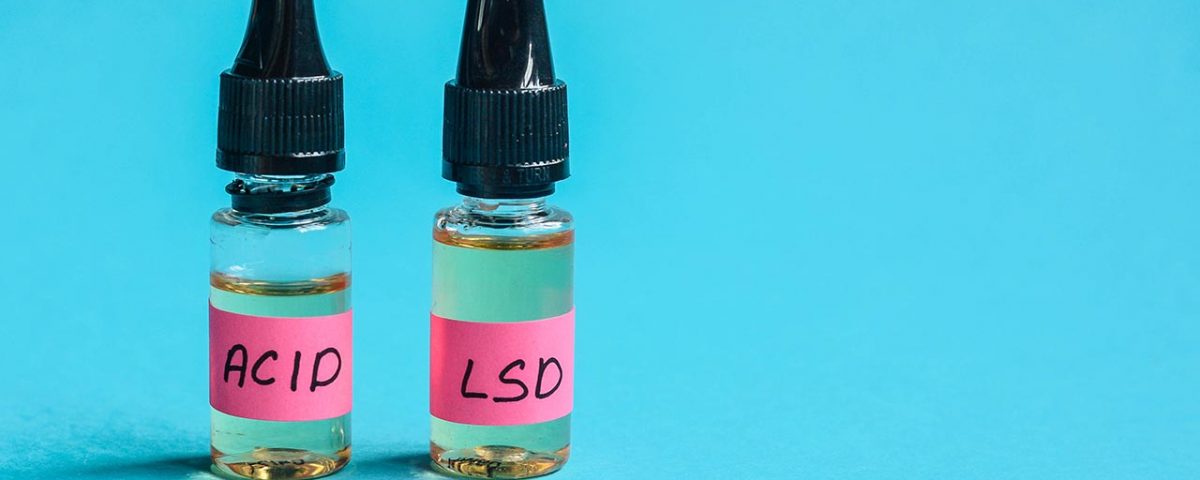As a drug rehab in Chicago, we know all too well that people abuse drugs for a variety of reasons.
In some cases, people will take drugs because they give them a burst of energy and leave them feeling happy. Others abuse drugs because of their relaxing side effects. But what about the drugs that cause mind-altering side effects, like hallucinations and delusions? Acid is one such drug whose hallucinogenic properties have some people coming back for more. If you’ve ever wondered, “what is an acid trip,” we’ve got plenty to talk about.
What is An Acid Trip Like?
LSD, commonly referred to as acid, is a hallucinogenic drug that dramatically alters the user’s perception and often leads to intense hallucinations. An acid trip refers to the psychedelic side effects that people experience when they're high off LSD. In some cases, people turn to drugs for a burst of energy or a feeling of happiness, while others seek the calming effects. However, acid stands out due to its mind-altering properties, which can induce both fascinating and terrifying hallucinations.
When someone uses LSD, they might initially feel an overwhelming sense of euphoria or a distorted sense of time and space. However, the effects on the brain extend beyond these sensory distortions. Users often struggle with memory retrieval and cognition, experiencing flashbacks of long-buried memories, which can be disorienting and frightening. In some cases, these intense psychological experiences can mimic symptoms of schizophrenia, such as hearing voices, seeing things that aren’t there, and irrational paranoia that someone might be out to harm them. This overlap has led some researchers to explore potential links between LSD use and schizophrenia.
Physically, the effects of LSD are equally profound. Users frequently report dilated pupils, extreme changes in body temperature, either sweating or chills, a loss of appetite, sleeplessness, and tremors. These symptoms are primarily due to how the drug interacts with the brain, but they manifest physically and can be quite distressing.
Furthermore, the long-term effects of LSD can linger well after the drug has been metabolized and left the system. Some users continue to experience episodes of hallucinations and paranoia, known as flashbacks, long after they have stopped using the drug. For those who find the withdrawal effects unbearable, there is a temptation to take increasingly larger doses to escape the negative feelings, which is extremely risky. Doses over 400 mcg can cause life-threatening toxicity, leading to severe health crises like sudden heart failure, extreme overeating, and accidents caused by impairment.
Understanding the full spectrum of LSD’s impact, both mentally and physically, is crucial for anyone considering its use or trying to help someone manage its effects. The allure of its hallucinogenic properties might be enticing, but the potential for long-term harm cannot be underestimated.
How Long Does an Acid Trip Last?
Hallucinations induced by LSD vary widely from person to person. The duration of an acid trip is influenced by multiple factors, including dosage, individual tolerance, co-ingested substances, and the user's mental state.
Typically, the effects of LSD manifest within 30 to 90 minutes of ingestion, reaching their peak intensity after two to four hours. After approximately 12 hours, the immediate effects of LSD diminish significantly, though they may persist for up to 24 hours. During this period, adverse effects such as difficulty concentrating, headaches, dizziness, imbalance, and nausea are most commonly reported.
LSD can linger in the body for 15 to 28 hours before being fully metabolized. Despite its relatively short duration of action (usually lasting six to 12 hours), LSD may not be detectable in standard drug screenings. Specialized tests are necessary for its detection. Moreover, some individuals may endure lingering psychological effects such as anxiety, depression, or sleep disturbances in the days following an LSD experience.
What Does a Bad Acid Trip Feel Like?
One person’s acid trip can be very different from someone else’s. While good trips may seem dream-like and enlightening, bad acid trips can be frightening and anxiety-inducing. Although you may still experience LSD’s side effects – such as mixed-up senses, hallucinations, and distortions – bad acid trips can have an element of fear, paranoia, and even depression. Some people on bad acid trips may experience overwhelming effects, to the point where they accuse people around them of negative behaviors. Although rare, these feelings can become so unbearable that the person may consider suicide.
It’s not always possible to know what your acid trip will be like or how long the side effects will last. While the effects of LSD wear off within a day, there are cases of acid flashbacks or rebound hallucinations among users even years after last taking the drug. Although the person may not be on acid at the time, they will feel like they are on an acid trip and experience hallucinations similar to those that they had before while under the influence of LSD. This is also known as Hallucinogen Persisting Perception Disorder (HPPD).
How to Stop an Acid Trip
Although there are ways to reduce the side effects of an acid trip, like staying hydrated and resting, the only way to prevent or stop an acid trip is to not take LSD in the first place. Once LSD is in your system, nothing can stop an acid trip; you have to wait for the effects to pass. If you are having a bad LSD trip, you should avoid taking other drugs or drinking alcohol, avoid overstimulating environments, drink plenty of water, go somewhere safe and familiar, and get help.
What are the Long-Term Effects of LSD Use?
Long-term use of LSD can have profound and enduring consequences. Individuals may face persistent side effects long after the drug has been metabolized and eliminated from the body. To cope with the discomfort of withdrawal symptoms, some users consume increasingly higher doses. This escalation can be perilous, as consuming LSD in quantities exceeding 400 mcg may lead to potentially fatal toxic effects. Furthermore, repeated usage heightens the risk of severe health issues including episodes of extreme binge eating, abrupt cardiac failure, and a heightened likelihood of accidents due to significant impairment.
What Psychological and Physical Side Effects Can Occur During LSD Withdrawal?
While a person is withdrawing from LSD, they may encounter several psychological side effects, such as heightened anxiety, difficulties with focus, depressive episodes, and episodes of severe confusion. One particularly disturbing effect is flashbacks, which might bring up previously suppressed traumatic memories. This can lead to overwhelming fear and paranoia, and in some severe instances, suicidal thoughts. Physiologically, LSD is not associated with many withdrawal symptoms, as the body does not develop a traditional physical dependency. However, users may experience disturbances in their cognitive functions, like memory loss and impaired thinking, fostering fears about potential long-term brain damage. The tolerance developed from regular LSD use diminishes quickly once the drug use ceases, removing some effects but leaving psychological vulnerabilities.
While LSD may seem like a fun drug to experiment with, it may also be accompanied by many dangers. If you or someone you care about is experimenting with drugs or any kind, get help. Our drug treatment in Chicago can help people with various substance abuse problems get clean.
Drug abuse of any kind can be dangerous. Get help today at Banyan Chicago by calling 888-280-4763.
Related Reading:
LSD Psychosis
LSD Myths Debunked: The Truth Behind Acid









